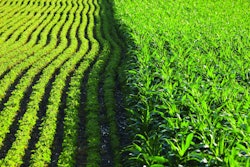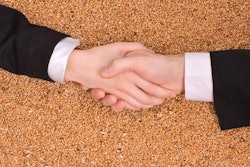
Worldwide rain and flooding may destroy nutrients in animal feed, research suggests
With extreme rain events striking all corners of the globe this summer, affected producers might expect to see damaged and moldy pasture supplements. But those in flooded regions should also keep an eye out for nutritional deficiencies in their animals, according to animal feed research.
Trials conducted at the University of Florida in 2015 showed that salt-based, free choice trace mineral supplements lost 50-80% of their copper, zinc and manganese content when exposed to 2-4 inches of rain over the course of a week.
“You don’t even need a big rainfall event, just a few millimeters of very short rain, or even the morning dew can result in trace mineral leaching,” said Davi Brito De Araujo, global program manager for Trouw Nutrition, which participated in the University of Florida trials. The feed or supplement might have started with 2,000 mg/kg of copper, he said, “but at the end of the day you may not have half of that amount, due to moisture leaching away these essential nutrients.”
Livestock offered supplements that have lost their trace mineral content due to rainfall might exhibit decreased feed intake, changes in skin color or hair loss, according to Brito. Deficiencies might also impact the frequency of illness and reproductive challenges — for example, causing increased mastitis. And in the case of severe, long-term mineral deficiencies, Brito said, animals may have difficulty walking or become blind.
Attention to supplement formulation can reduce the amount of nutrition lost during rain events, decreasing the risk of deficiencies, Brito said.
Metals like copper, zinc and manganese leach out of supplements when exposed to moisture because of their high solubility, Brito said. This is especially true when using sulfate or organic-based trace minerals. But some compounds have stronger chemical bonds than others, and those with stronger bonds are more resistant to leaching. So where copper sulfate would be more prone to leaching, a hydroxychloride would not.
“When it comes to the grain components contained in supplements, we’re probably going to lose some value there,” Brito said. “Best practice for supplements is to store them in a dry, well-ventilated space and only deliver the amount needed per day. For the minerals, it’s a little different. We can avoid leaching by using the right mineral source such as a hydroxychloride source, which can significantly limit the loss of essential trace minerals.”
Providing protective shelter to animals and feed can also help prevent leaching, but isn’t a cure-all. Even small amounts of moisture can cause minerals to clump together, preventing livestock from consuming them. Or it may cause the metals to break free from their chemical compounds, which may also trigger reduced feed intake and may interfere with rumen function.
Brito cautioned against over-supplementation of trace minerals for this reason. While it may be tempting to add extra minerals to a supplement to counter the potential loss of trace mineral content, it may only make the situation worse, while negatively impacting the environment.
“While this may be the way this has been done for many years, new trace mineral technology puts us in a much better position to promote the increased value of precision nutrition when supplementing on pastures,” Brito said. “Based on recent research, there are new, low solubility trace mineral options that can significantly increase nutrient stability and supplement effectiveness. Maintaining trace mineral positional and chemical stability in pasture supplements and free choice minerals can have a direct effect on improving cattle performance and well-being.”










